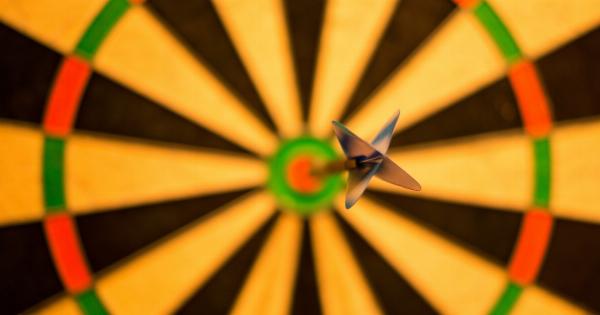With the rise of smartphones and the ubiquity of social media platforms, more and more people find themselves spending an increasing amount of time scrolling through their feeds, posting updates, and interacting with others online.
Social media has become an integral part of our daily lives, but have you ever wondered why it can be so addictive? In this article, we will explore the brain science behind the addictive nature of social media and understand how it affects our behavior and mental well-being.
The Dopamine Effect
One of the primary reasons why social media is addictive is the dopamine effect it has on our brains. Dopamine is a neurotransmitter that is associated with pleasure and reward.
When we receive notifications or positive feedback on social media, our brain releases dopamine, leading to a feeling of pleasure and satisfaction.
Interestingly, studies have shown that receiving notifications or likes on social media activates the same reward pathways in our brains that are triggered by certain addictive substances, such as drugs or alcohol.
This reinforces the pleasurable experience and motivates us to seek more engagement on social media platforms, leading to addictive behavior.
Fear of Missing Out (FOMO)
Another reason why social media can be addictive is the fear of missing out, commonly known as FOMO.
Social media platforms often present a carefully curated version of other people’s lives, highlighting their achievements, travels, and social events. This constant exposure to other people’s seemingly perfect lives can trigger feelings of inadequacy and a fear of missing out on experiences.
As a result, we may find ourselves constantly checking our social media feeds to ensure that we are up to date with the latest happenings in our social circles.
We want to stay connected and not miss out on any social engagements or exciting opportunities. This fear of missing out can drive compulsive behavior and contribute to the addictive nature of social media.
Social Validation and Self-Esteem
Humans are social beings, and social media provides us with a platform to seek validation from others. When we receive likes, comments, and shares on our posts, it reinforces our sense of self-worth and boosts our self-esteem.
This validation can be addictive, as we become reliant on external feedback to feel good about ourselves.
Moreover, social media platforms often encourage comparison, as we gauge our popularity and success based on the number of followers, likes, and comments we receive.
This constant need for validation and the fear of being less popular than our peers can lead to addictive behavior, where we constantly seek affirmation from others on social media.
The Infinite Scroll and Endless Content
Social media platforms are designed to be highly engaging, with features like infinite scrolling and endless content.
The infinite scroll feature allows users to keep scrolling indefinitely without a visible endpoint, creating a never-ending stream of new content. This design element is intentionally implemented to keep users hooked and encourage them to spend more time on the platform.
Furthermore, algorithms behind social media platforms are designed to show us content that is tailored to our interests and preferences.
This personalized content feed provides a constant stream of stimulating and engaging information, making it difficult for users to disconnect. With each swipe or scroll, there is a new post, video, or update waiting to capture our attention, leading to addictive behavior and excessive screen time.
The Role of Likes and Social Comparison
Likes and feedback on social media play a significant role in shaping our behavior and fueling addictive tendencies.
Studies have shown that receiving likes on our posts triggers a rewarding sensation in our brains, similar to the pleasure experienced when eating delicious food or winning a game. This positive reinforcement strengthens the association between posting content and feeling good, resulting in a desire for more likes and social interaction.
In addition, social comparison is an inherent aspect of social media. We often compare ourselves to others, measuring our lives, achievements, and appearance against those of our friends and acquaintances online.
This constant social comparison can lead to feelings of envy, inferiority, and low self-esteem. However, the occasional positive social comparison, where we perceive our lives to be better than others, can also drive addictive behavior as we seek positive feedback and validation from our social media connections.
The Role of Notifications
Notifications are a powerful tool that social media platforms use to keep us engaged and addicted.
Every time we receive a notification, whether it’s a new message, a like, or a comment, our brains release dopamine, reinforcing the pleasurable experience and driving us to seek more notifications.
Moreover, the intermittent nature of notifications adds to their addictive nature. On social media, notifications are unpredictable and variable, similar to the rewards we receive from gambling or slot machines.
This unpredictability activates the reward pathways in our brains, making us crave more notifications and leading to compulsive behavior and excessive use of social media.
The Social Connection Aspect
Humans have an inherent need for social connection and belonging, and social media fulfills that need to some extent. Social media platforms allow us to stay connected with friends, family, and acquaintances, regardless of geographical barriers.
It provides us with a sense of virtual community, where we can interact, share, and engage with others.
This social connection aspect of social media can be addictive, as we become reliant on these platforms to fulfill our social needs.
We may feel anxious or disconnected when we are not able to access social media, leading to addictive behavior and an over-reliance on these virtual relationships.
The Role of Design and User Experience
Lastly, the design and user experience of social media platforms contribute significantly to their addictive nature.
Companies behind these platforms invest in intricate user interface designs, employing various psychological techniques to keep users engaged for as long as possible.
Features like autoplay videos, suggested content, and targeted advertisements are strategically placed to capture our attention and manipulate our browsing behaviors.
These design elements, combined with the addictive nature of social validation and infinite scrolling, make it challenging to break free from the grips of social media addiction.
Conclusion
Social media addiction is a growing concern in today’s digital age. The brain science perspective sheds light on the underlying mechanisms that make social media so addictive.
The release of dopamine, fear of missing out, social validation, infinite content, likes, notifications, social connection, and user experience are all key factors that contribute to the addictive nature of social media.
It is important to be aware of the potential negative effects of excessive social media use and to find a healthy balance in our digital lives.
Setting limits, taking regular breaks, and focusing on real-world relationships can help minimize the addictive tendencies and promote overall well-being.






























